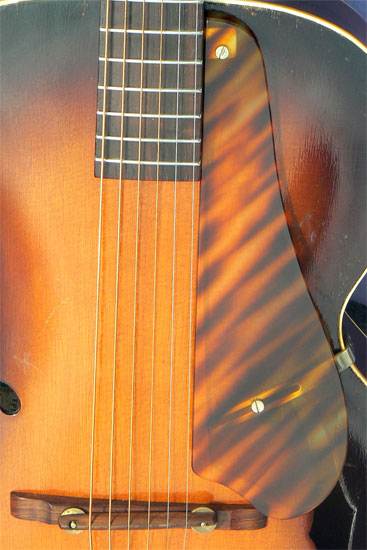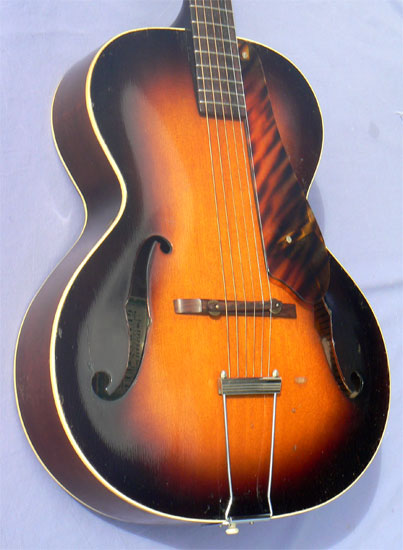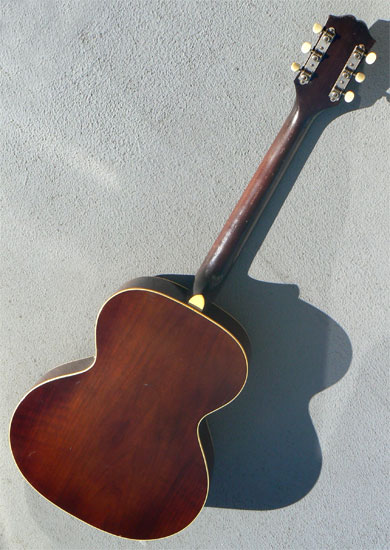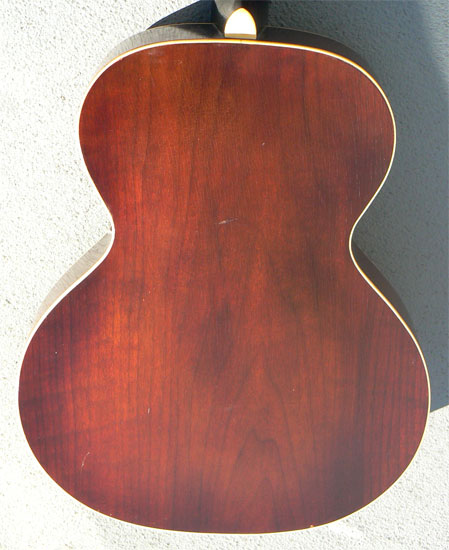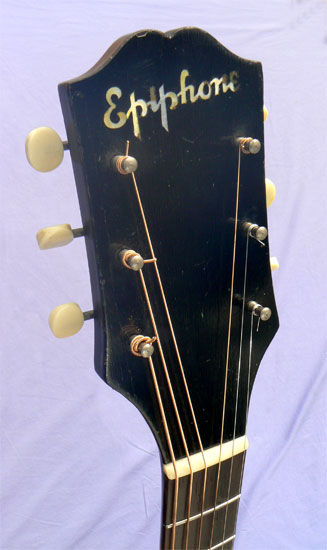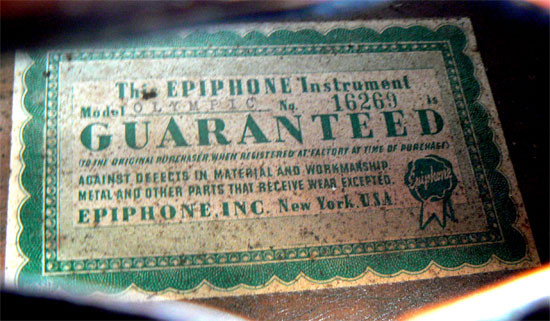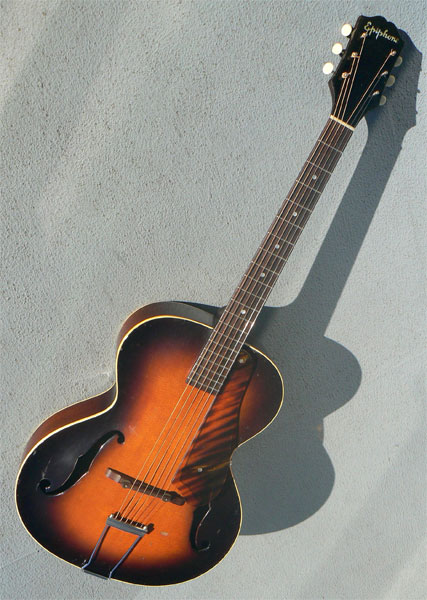
Home / Instruments /Accessories / Ordering / Tips
archtop.com
1940 Epiphone Olympic
Status: Pricing and hold status for all instruments currently available is shown on our Instruments page here. If this instrument does not appear on the Instruments page it has been sold, and is no longer available. Photos and descriptions of Previously Sold instruments may by found here. To be notified of examples of this model or similar instruments in the future, please contact [email protected],. Please be specific on which instrument(s) you're looking for, and we'll be happy to contact you as soon as they become available.
Serial #: 16269, green New York label. Body size at lower bout: 15 1/2" Scale length: 25 1/2" Nut width: 1 11/16" Neck depth, 1st/10th frets: .88/.99
Materials: Solid carved Adirondack spruce soundboard; arched mahogany back and sides; one-piece mahogany neck; Brazilian rosewood fingerboard; pearl script peghead inlay, single-bound body, bone nut.
Hardware: Original hardware includes contoured fire-stripe pickguard, nickel three-on-a-plate open back tuners, compensated adjustable Brazilian rosewood bridge. Period nickel trapeze tailpiece.
Notes: One of the original Epi archtop models, the Olympic was introduced in 1931, and remained in the catalog until 1949. Originally sporting a 13" mahogany body, the Olympic was upsized twice to it's final 15 1/2" body design. Unlike the Gibson archtops of comparable size, the Olympic and its other Epi cousins all had long scale necks and suspended fingerboards, to maximize their formidable projection and bark.
Like many, we'd assumed for years that these models would be fairly plentiful. However, after alt-country guitar hero David Rawlings adopted the Olympic as his all-purpose touring and recording guitar, we began getting requests for them that we just couldn't fill at any price. And when collectors began searching them out in earnest, it quickly became apparent just how seldom these rarities come to market, much less in fine original condition like this.
This remarkable example has 100% original factory finish and is nicely free of pick and buckle wear. The original rosewood bridge base has a serial number matching the label, and the original three-on-a-plate tuners with oval keys remain attached, along with a prewar style trapeze tailpiece. An early Epiphone threaded truss rod is installed under the fingerboard extension, and best of all, the guitar retains its striking original fire-stripe tortoise pickguard, in gleaming condition.
At a scant 4lb 10oz, the guitar is happily lightweight and well balanced, on the lap or the strap. The Brazilian rosewood fingerboard has smooth low action over polished recent fretwork, and the gentle light V neck glides easily across the palm. The guitar has the bark of a true 40's Epi, bright and forward with vibrant projection, and plenty of punch. A special plus, the slightly larger body adds enhanced bass response and sustain, compared with the smaller bodied model used by Rawlins .
A fine example of one of Epi's most sought-after models. One only: call now.
Setup: The frets have been precision leveled, recrowned and polished as required; bridge height adjusted; bridge compensation set; string slots at nut and bridge inspected and recut as necessary; bridge foot contour inspected and fit to top as necessary; bridge radius inspected and recurved as necessary; bridgewheels and tuners lubricated; fingerboard and bridge oiled; body and neck cleaned and hand polished.
This instrument is strung with medium gauge phosphor bronze strings. The guitar will accommodate lighter or heavier gauge strings, according to preference. String action is set at 5/64" to 6/64" at the 12th fret, with moderate relief for acoustic playing with medium strings. The action may be lowered or raised to your requirements with the adjustable bridge.
Case: Deluxe heavy duty rigid foam hardshell case.